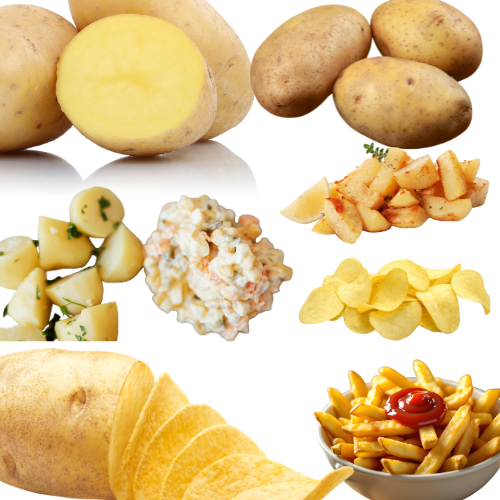A single acre can yield 145,000 shillings in profit—or wipe out your entire investment. Agricultural experts reveal why potato farming in Kenya is a gambler’s crop.
Nakuru: In the rolling hills of Meru, John* counted his losses last harvest season. The 200,000 Kenyan shillings he had invested in potato farming—his hope for a better year—had vanished almost overnight. Late blight ravaged his fields, reducing his expected 160-bag harvest to just 40. Then came the final blow: market prices crashed to 500 shillings per bag.
His total revenue? A mere 20,000 shillings against the costs of 174,000. In one devastating season, John lost 154,000 shillings—roughly 75% of his investment.
His story is not unique.
The Tantalising Promise
On paper, potato farming in Kenya presents an irresistible opportunity. According to recent market analysis by Farax Kenya, an agricultural consulting firm, a single acre requires an initial investment of 160,000 shillings but can generate annual profits of 145,000 shillings—a staggering 91% return with a 13-month payback period.
“That’s 12,000 shillings every month from just one acre,” explains Kelvinu, an agricultural consultant at Alfa Kenya who has been tracking the sector’s performance. “For farmers with land, these numbers look incredibly attractive.”
The math seems straightforward: at an average market price of 2,000 shillings per bag and an expected yield of 160 bags annually across two planting seasons, farmers can earn 320,000 shillings in revenue. Subtract the 174,000 shillings in production costs, and the profit margin appears substantial.
The Hidden Costs Nobody Mentions
But beneath these promising figures lies a darker reality that agricultural experts say most aspiring farmers never see until it’s too late.
The cost breakdown for one acre reveals the capital intensity of the venture:
- Seeds: 49,000 shillings (16 bags)
- Land preparation: 11,000 shillings
- Fertilizers (DAP and NPK): 19,000 shillings
- Plant protection (fungicides, insecticides, herbicides): 8,500 shillings
- Labor for planting and harvesting: 24,000 shillings
The first season alone demands 117,000 shillings, with subsequent seasons costing 57,000 if farmers use seeds from their previous harvest.
Three Nightmare Scenarios
Agricultural consultants have identified three devastating scenarios that routinely destroy potato farming ventures:
Scenario One: Market Collapse When oversupply hits or demand drops, prices can plummet to 800 shillings per bag. At this rate, even a full harvest of 160 bags generates only 128,000 shillings—resulting in a 46,000-shilling loss.
Scenario Two: Disease Outbreak Late blight and other diseases can destroy up to 75% of crops. Farmers harvest just 40 bags instead of 160, barely breaking even if they’re fortunate. For many, like John, it means total ruin.
Scenario Three: Market Access Failure When buyers disappear, roads become impassable during rainy seasons, or storage facilities are unavailable, farmers face an impossible choice: watch their harvest rot or feed it to livestock. Either way, the entire 174,000-shilling investment evaporates.
“Price fluctuations between 1,500 and 3,500 shillings per bag can change everything,” Kelvinu notes. “And these swings happen regularly, often without warning.”
The Smart Farmer’s Strategy
Despite the risks, agricultural experts insist potato farming can be profitable—but only with proper risk management and realistic expectations.
Critical Success Factors:
- Strategic Timing: Plant during the March-April long rains or October-December period to capture premium holiday season prices.
- Variety Selection: Choose high-yielding varieties with strong market demand. While some varieties produce 40 bags per acre, others can yield 60. Popular varieties like Kinnangi command better prices and steady demand.
- Capital Requirements: Maintain a minimum of 200,000 shillings in capital, including an emergency fund for unexpected setbacks.
- Infrastructure Access: Secure irrigation systems to reduce dependence on rainfall and establish guaranteed market channels before planting.
- Quality Inputs: Use certified seeds and budget for two complete seasons, not one, to allow for recovery and profit realization.
Who Should—and Shouldn’t—Enter the Market
“The honest answer is: it depends,” Kelvinu emphasizes. “If you’re looking for quick money or treating this like a lottery, potato farming will frustrate you.”
The ideal potato farmer, according to industry experts, has:
- Substantial capital reserves beyond the basic investment
- Access to irrigation infrastructure
- Established market connections or storage facilities
- Disease management knowledge and resources
- Patience to weather at least two growing seasons
For those lacking these prerequisites, the 91% return remains theoretical—a number that exists in spreadsheets but evaporates in the field.
The Verdict
Potato farming in Kenya occupies a precarious position between agricultural opportunity and financial hazard. The potential for significant returns is real, but so is the risk of total loss. As John’s experience demonstrates, the difference between profit and ruin can come down to factors beyond any farmer’s control: weather patterns, disease outbreaks, market fluctuations, and infrastructure failures.
For prospective farmers, the message is clear: enter this market with open eyes, adequate capital, and robust risk management strategies—or don’t enter at all.
Name changed to protect privacy
For detailed cost breakdowns and potato farming resources, agricultural consultants
